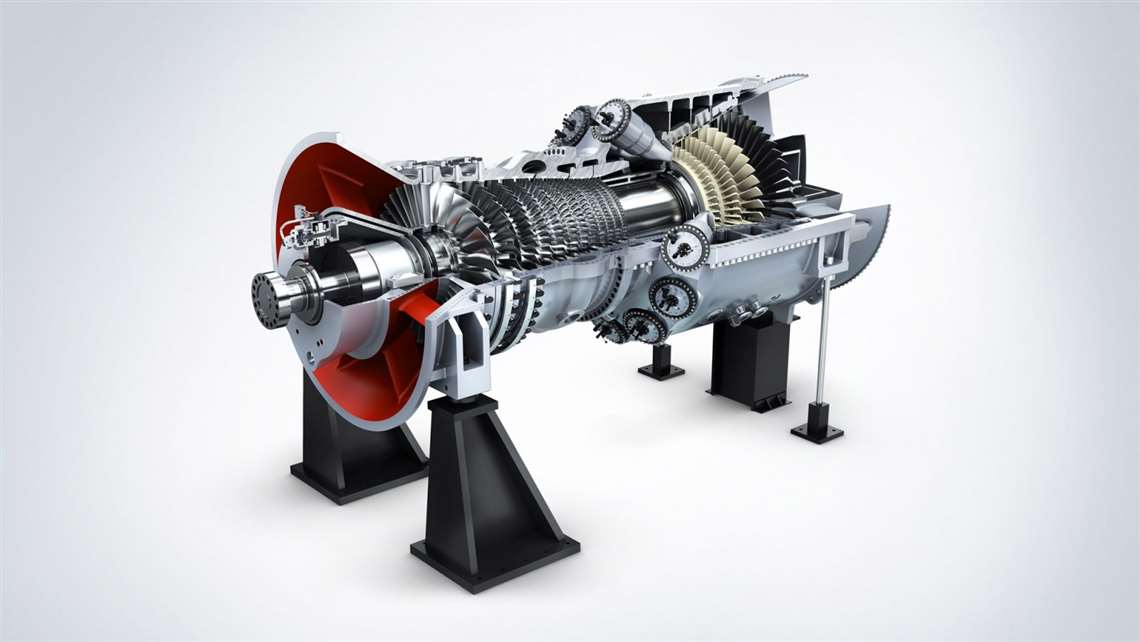New HL-Class Gas Turbines Grow In The Market
27 August 2018

Siemens has received an order for the first 50-Hz unit of the SGT-9000HL type, which will be delivered to the Scottish energy company SSE plc for the new gas-fired power station Keadby 2 in Lincolnshire, U.K.
Since the official launch in 2017 (see story here), Siemens’ new HL-class components and technologies have accumulated more hours in unit testing decoupled from the grid at the Siemens test facility in Berlin, Germany. At the same time, rig testing is ongoing at the Siemens Clean Energy Center near Berlin and other locations around the world.
These further investigations have allowed Siemens to confirm new increased performances for the turbines in the range; in particular, new power outputs have been reported: 481 MW for the 50-Hz SGT5-8000HL (and 708 MW for combined cycle 1×1 operation); 567 MW for the SGT-9000HL in the 50-Hz version and 388 MW for the 60-Hz version (841 and 577 MW for combined cycle 1×1 operation respectively).
The 63% efficiency mark in combined cycle operation is confirmed but Siemens also maintained that this threshold is going to increase further for these air-cooled four stage turbine models.
Kolja Schwarz, Siemens’ head of HL-class portfolio management, explained that the very first order for the HL-class turbines, a 60-Hz version of the SGT-9000HL, for the Duke Energy’s Lincoln County Combustion Turbine site in the USA is expected to be ready for an extensive test and validation program starting in 2020. The testing program contains also long-term validation in commercial operation, in accordance with the customer, and will be Siemens’ main platform to assess new technologies aiming at reaching and breaking the next efficiency level.

“The Keadby unit for customer SSE that has recently been sold is a 50-Hz version, fully scaled from the 60-Hz unit being installed in Lincoln County,” explained Schwarz. “The Keadby plant will have a testing and validation phase of several months. Since the unit is expected to go into commercial operation in 2022, its earlier test results will be used to gather experience to be transferred to all following projects.”
The Keadby 2 combined-cycle plant replaces an existing coal plant and SSE will invest £350 million in the construction of the new power station with a total capacity of 840 MW. Siemens will deliver a full turnkey solution, plus a 15-year standard service contract.
Martin Pibworth, SSE’s wholesale director, stated that the new gas-fired power station Keadby 2 with its highly efficient technology will provide reliable power at half the carbon emissions of the coal generation it is replacing. The SGT-9000HL in Keadby 2 is expected to be the first high-performing engine in the UK market reaching the efficiency threshold of 63%.
One of the challenges in the Keadby 2 project was, according to Schwarz, the auction which was concluded with no clearing for SSE for the new plant this time around. “SEE decided to go ahead despite the auction ending unexpectedly at £8.5—when the average in the past was above £20—and with no new large gas turbine plant cleared,” explained Schwarz.
“Both the project in the UK and in the USA will allow us to collect a huge amount of data, thanks to several thousands of sensors being connected to the two units. A dedicated testing team is in charge of the data collection and analysis. Therefore, we streamline live all data to our engineering hubs globally,” added Schwarz. “Every department and every expert for each turbine component will be familiar with the collected data. Everything, of course, is treated according to the highest security levels.”
For Siemens, the digitalization of power plants has started more than 10 years ago with the introduction of the Siemens Power Diagnostic Centers.
Nowadays Siemens monitors 530 gas turbines and more than 130 steam turbines all over the world. It collects and processes 76 million sensor hours from 316 000 sensors, for a total of 13 GB of data per day. This data is used to improve the whole product portfolio from the installed fleet up to the introduction of products like the HL class gas turbines. Besides the hardware development, the data pool is used to develop software based performance improvement such as auto-tuning or auto-learning systems.
According to Schwarz, the reaction from the market after the official launch of the HL-class turbines last year has been very positive: “We already have projects in the pipeline that cannot be disclosed at this point. Asia for sure is an interesting market, but also the USA, Latin America, and Middle East. Europe is a very flat market for this size of turbines, but it is also true that we sold our first 50-Hz gas turbine in the UK.”

The new HL-class of gas turbines utilize components produced with Additive Manufacturing (AM); Schwarz explained that the turbine ordered for the Keadby 2 power plant will contain some parts manufactured with AM. Most of these components are concentrated in the combustion area that is one of the main focus areas for AM so far.
“One of the biggest advantages in AM at this point is innovative design possibilities with rapid prototyping: new ideas can be realized quickly and installed in the rigs for testing in no time compared to conventionally casted components,” said Schwarz.
Siemens’ capability in Additive Manufacturing is growing steadily, in fact the company has currently more than 10 different gas turbine components in series production with AM and more than 100 000 operating hours of fleet experience in commercial operation. For example, Siemens is producing in series a 100% additive manufactured burner for the SGT-800 gas turbine, which is often used in demanding oil & gas and decentralized power generation applications. Siemens also designed, produced with AM, and validated a gas turbine blade – a component that has to withstand 1250° C temperature and 13 000 rotations per minute.
Schwarz mentioned also the improvement steps achieved in plant flexibility with the Flex-Plant concept that is applied to the new HL-class turbines too. With Flex-Plant technologies, the plant can reach full power output from igniting the gas turbine within 30 minutes after an overnight shutdown—down from the previous 50 minutes. Shut down has been addressed too and can be carried out in 25 minutes—also down from 50—thanks to the simultaneous shut-down of gas and steam turbine.
“Even more flexibility improvements are achievable thanks to a combination of different technologies, as for example combining conventional gas-fired power plants with battery storage,” said Schwarz. “With these combined technologies the plant can be operated in a straighter line, while heavy load changes are managed by the power stored in the battery.”
–By ROBERTA PRANDI
POWER SOURCING GUIDE
The trusted reference and buyer’s guide for 83 years
The original “desktop search engine,” guiding nearly 10,000 users in more than 90 countries it is the primary reference for specifications and details on all the components that go into engine systems.
Visit Now
STAY CONNECTED




Receive the information you need when you need it through our world-leading magazines, newsletters and daily briefings.
CONNECT WITH THE TEAM












